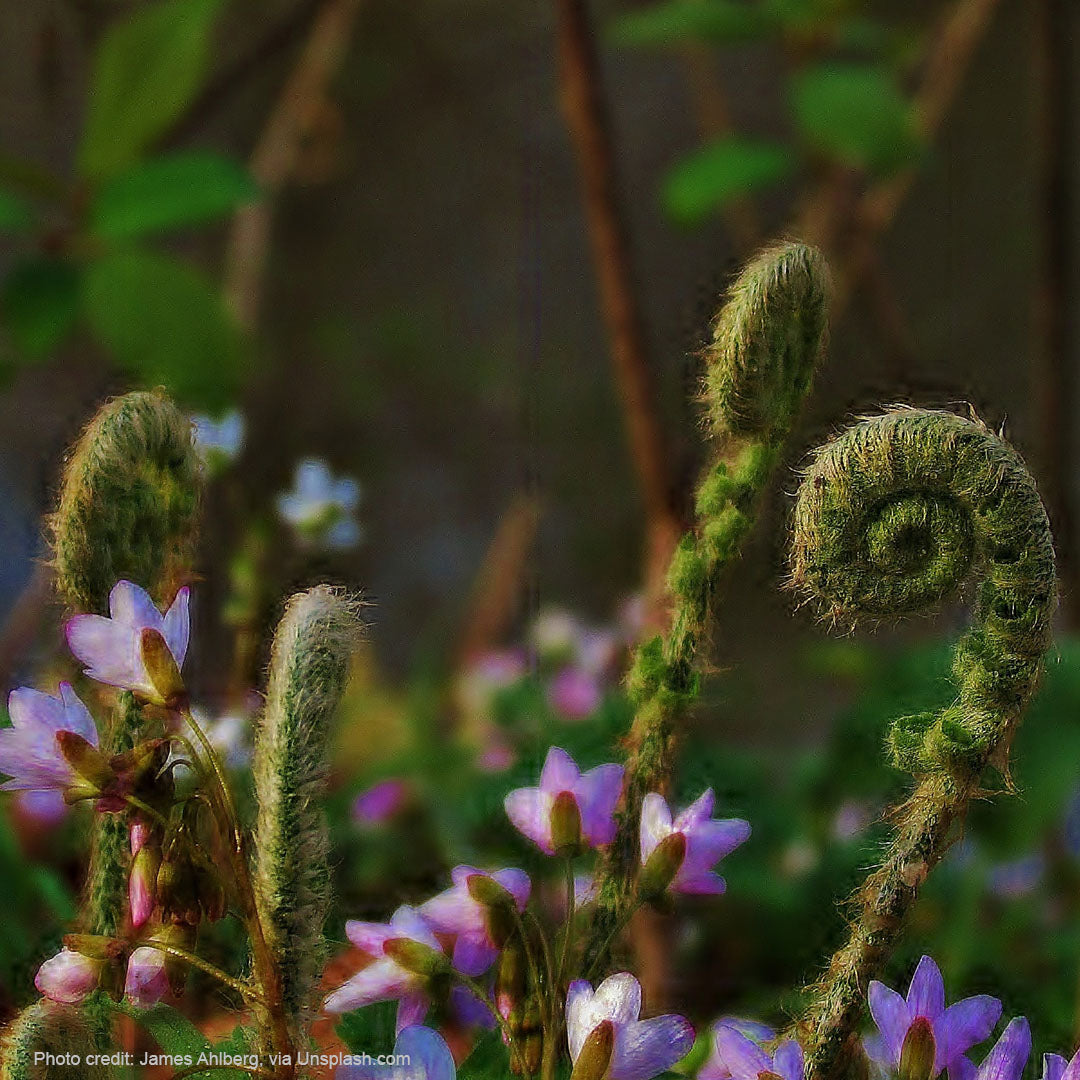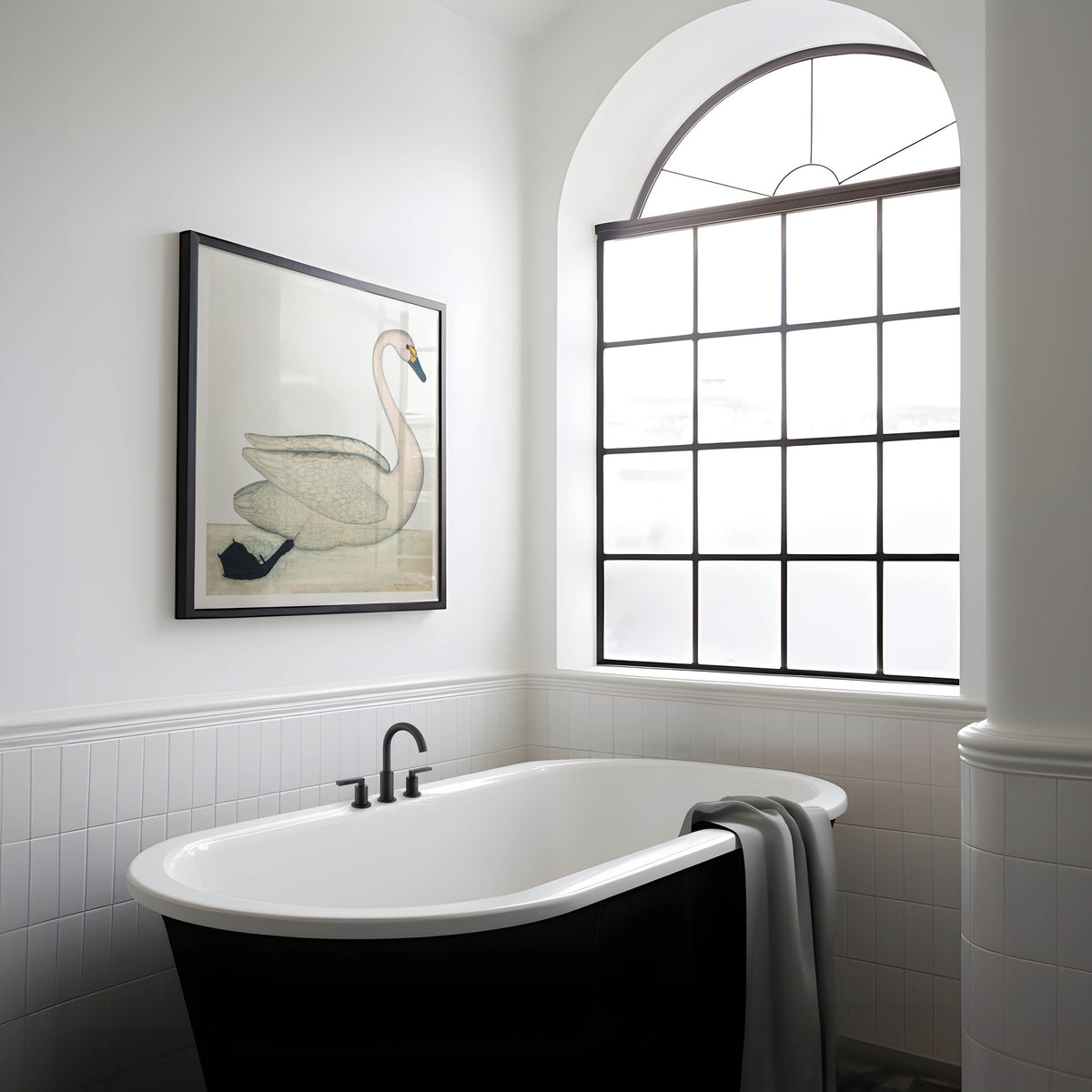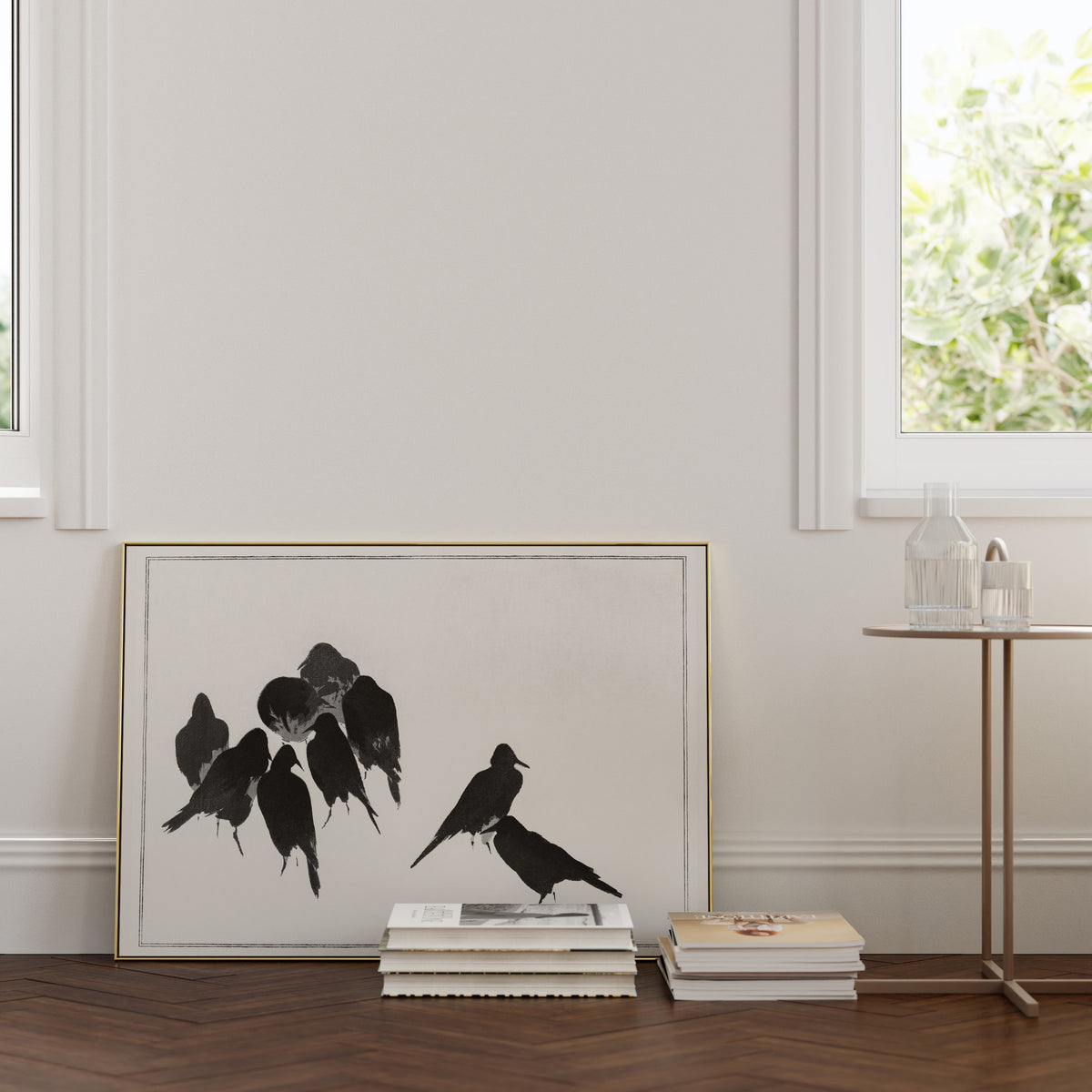Creating Biodiverse Backyards & Balconies

The bad news on biodiversity continues to roll in. At the end of March 2018, more than 550 experts from over 100 countries met in Medellín, Columbia to assess diversity loss and find solutions. In addition to the usual suspects—pollution, climate change, misuse of natural resources, etc.—scientists zeroed in on alien plant species. Top photo credit James Ahlberg
The threat to native plants from alien species is not new, of course. Non-native plant species have been surreptitiously creeping into wilderness areas and suburban landscapes for eons. According to Douglas Tallamy, professor and chair of the Department of Entomology and Wildlife Ecology at the University of Delaware, for centuries gardeners have favoured ornamental landscape plants from China and Europe over those that evolved locally.
It would be easy to justify our collective taste for non-native species if they were equally capable of supporting wildlife and peacefully coexisting with indigenous plants. Unfortunately that’s not the case. They have caused some native species to disappear completely and have generally reduced biodiversity, in both flora and fauna, wherever they put down roots.

Photo credit Annie Spratt
So What Makes Non-Native Species So Threatening?
When we introduce alien plant species into environments in which they did not evolve, the unintended consequences are widespread.
-
Non-native plants have free reign. To begin with, non-native species are immune to local competitors, parasites, and natural predators that would typically limit their spread, giving them a clear advantage over native species.
-
Local wildlife at risk. All plants produce noxious chemicals to protect against predators. Native wildlife has evolved to cope with the chemicals produced by native plants, but has no evolutionary history with non-native plants.
-
Wildlife forced to adapt or fail. Alien plant species have forced insects and other animals to depend on non-native landscapes for their survival. Many struggled to adapt and their numbers are in decline around the world.
- Insects under threat. Insects are among the most threatened species, which is problematic since so many other animals depend on healthy insect populations for their own health.

Photo credit Patti Black
Why Are Insects So Vital To Healthy Ecosystems?
Insects make up the majority of all animal species and act as pollinators. Tallamy shows just how troubling the decline in insect populations is by showing how energy moves through food webs.- All animals, humans included, receive energy directly from plants or by eating animals that eat plants.
- Insects are the main food source for many animals, and are responsible for moving energy from plants to other animals.
- Local insects evolved with native plants, allowing them to disarm the plants’ chemical defences. By choosing non-native plants, we’re limiting the number of animal species that plants can support. Alien ornamentals support 29 times fewer animals than do native ornamental plants.
- Declining insect populations are becoming more apparent to everyone, typically in the form of fewer squished bugs on windshields. Formal studies back up the informal observations. In a study published last fall, researchers monitored populations of flying insects at 63 German locations over three decades, and found a 76 percent decline. While there are multiple causes, alien plant species are at least partly responsible.
Why Is Biodiversity Important for Kids’ Health?
Bugs aren’t the only ones suffering. Human health, especially children’s, also relies on diverse nature. Our microbiomes—the billions of microbes that keep us at optimal function and health—depend on diversity found in the microbe populations we come in contact with daily.The underlying mechanisms are pretty simple: Diverse environments support more varieties of beneficial microbes. Beneficial microbes then colonize our bodies and protect us against disease.
Researchers are only just beginning to uncover the multitude of ways microbes support human health. The emerging evidence is both intriguing and promising.
- Alan Logan, author of Your Brain on Nature, reports that people who live in areas with rich plant diversity have more diverse microbiomes.
-
Research by Ilkka Hanski and colleagues at the University of Helsinki found that microbe diversity reduces the incidence of allergies. Compared to adolescents living in landscapes of lawns and concrete, those living in biodiverse natural areas had greater and more diverse microbial composition on their skin, lowering the risk of allergies.
- Another microbe found in diverse natural environments, Acinetobacter lwoffii, also benefits the human immune system. Evidence suggests that it plays a role in preventing asthma, hay fever and other ailments in children.
- And then there’s happy mud. Research found that a microbe commonly found in mud and healthy soils, Mycobacterium vaccae, can influence brain neurotransmitters leading to reductions in anxiety and improved cognitive functioning.
- Native plants also help reduce airborne allergenic pollen. Indigenous species of plants tend to be pollinated by insects and birds. Non-native plants, on the other hand, often have allergenic airborne pollen even when they are merely present, not invasive.

Photo credit Eco Warrior Princess on Unsplash
Grassroots Gardening for Biodiversity
We don’t need to wait for coordinated government action to prevent biodiversity loss. Individually, we can make a huge difference by choosing native plant species for our gardens. Never has gardening been more empowering or more important.
Even better, creating a biologically diverse garden is easier than just about any other (reasonable) alternative. Native plants require far less maintenance, and once established, they save money by reducing the need for fertilizers, water, and equipment. So read up on species native to your region, and then haul out the trowels, pruning shears, and watering cans. It’s never too late to get started.

Photo credit Vincent Van Zalinge
Tips for a Biodiverse Backyard
-
Plan ahead. Fall is the perfect time to build your biodiverse garden from the ground up. Remove weeds and grass, and then turn soil to a depth of about six inches. Add natural fertilizers and mulch to encourage good bacteria to grow right through the winter season. By spring, you’re ready to go. Every great garden starts with great soil.
-
Location is everything. Once you’re ready to plant, choose locations suited to the plant species. Consider sunshine, soil type, and hardiness zone.
-
Take the lazy option. Choose native plants—including annuals, perennials, shrubs, and trees—with a reputation for being easy to grow.
-
Max out diversity. Planting an abundance of diverse species maximizes the types of wildlife your garden can support and allows better adaptation to environmental changes.
-
Consider the food chain. Trees, shrubs and herbaceous plants are at the base of the food chain, providing pollen, fruit, sap, leaves, seeds, and nuts for insects and other animals. Use them as the foundation of your garden.
-
Plant trees for borderland bounty. If you have the land and resources, Tallamy recommends planting native trees along the borders of your property.
-
Layer to mimic nature. Maximum diversity is achieved by replicating the plant strata found in natural environments. Introducing shrubs and herbaceous understory plants under or around trees is a good way to mimic the vertical stratification of forests.
-
Don’t steal from nature. Removing wild plants disturbs natural habitats and reduces native flora. Transplants from wilderness areas also have more difficulty surviving in your garden. So purchase native species from local nurseries.
-
Offer food throughout the growing season. Select different plants to bloom throughout the growing season for pollinators, and select plants that produce seeds and fruit. That way, pollinators, birds, and small animals can feed from springtime through to autumn.
-
Strength in numbers. Instead of scattering them throughout your beds, group flowers of the same species together to make it easier for pollinators. Place nectar-producing plants in sunny spots, protected from the wind, to help pollinators find them easily.
- Beauty is as beauty does. Avoid ornamental plants with double or triple flowers. Quantities of nectar and pollen are reduced and less accessible to pollinators. Go for less showy—but still beautiful—plants.

Photo credit Avery Thomas
Consider Replacing Your Lawn
Replacing a lawn with a biodiverse garden is not as difficult as you might think. And, in the long run, replacing a lawn can be less work than maintaining it for a number of reasons.-
Native plants do not need fertilizer or pesticides. Lawn fertilizers contain phosphorus and nitrogen. Runoff causes excess algae growth in waterways and harms aquatic life. Pesticides also contaminate waterways and exposure to chemically treated lawns is a danger to everyone’s health.
-
Native plants use less water. Well-tended lawns need constant watering, which is a major concern in drought-prone areas. Native plants have deeper root systems that store water and reduce runoff. And there are lots of drought-resistant plants to choose from.
-
Native plants provide natural food and shelter. Lawns have little or no value to most wildlife. In comparison, a diverse array of native plants support a rich variety of wildlife.
General Tips for Success
-
Make mulch while the sun shines. Use commercial or homemade compost to improve the soil, balance the pH, and provide essential nutrients to plants. Organic mulch keeps the soil cool during the growing season, shelters organisms, discourages weeds, and feeds your plants as it decomposes.
-
Water plants deeply. Most plants are used to thorough soakings followed by periods of drought. Frequent, superficial watering is far less effective in maintaining plants.
-
Skip the fall cleanup. Cleaning up the plant beds in fall is not beneficial to plants or animals. Dead leaves, piles of twigs, and dried-out plants provide shelter for animals over the winter. Left-over fruit and seeds are good food sources for birds and insects.

Photo credit Chris Barbalis
Biodiversity on a Balcony
If you live in the city, then you have even more reasons to start a biologically diverse garden. Indoor and built environments lack the variety of beneficial microbes found in soil, outdoor plants, and the air we breathe.
And if you live in the city and have a balcony, then you’re in luck. With a little care, you can create a sky-high sanctuary using native plants that provide food and shelter for beneficial creatures. Kids will love caring for the garden and wallowing the mud that comes with it, even when space is limited.
Tips for Growing a Garden in Mid-Air
The same backyard principles apply to sky-high gardens, but balconies come with additional challenges. What works on the ground doesn’t necessarily work higher up, and there are a few additional things to consider-
Get ready to experiment. Exposure to wind, heat, and sun all play a role in creating microclimates on outdoor balconies. Under certain conditions, it’s possible to have different microclimates on the same balcony. You may have to get creative with plant hardiness zone charts and take a trial and error approach.
-
Plan ahead. If it sounds like you’ll spend all your time pampering finicky plants, fear not. There are beautiful plants for nearly every condition. The trick is to carefully evaluate the growing environment before planning your garden.
-
Time blooms, seeds, and fruit. As with backyard planting, include native perennials, shrubs, and deciduous and coniferous trees. Buy a variety of plants that bloom throughout the growing season, and grow plants that produce seeds and fruit.
-
Food for thought. If vegetables are more your thing, you can configure a vegetable garden for any balcony size. Add native plants, shrubs, and trees to increase biodiversity for insects, birds, and whatever else alights on your balcony.
-
Let the sunshine in. Keep in mind that most vegetables need 6 to 8 hours of direct sunlight as well as more care than other plants. If you’re short on time, herbs and leafy greens require less effort and still give that vegetable garden vibe to your balcony.

Photo credit clever visuals on Unsplash
Tips for Overwintering
-
Go lower on the hardiness chart. If you’re planning to overwinter plants on your balcony, choose those rated at least 2 zones hardier than your area specifies.
-
Size matters when it comes to containers. The surrounding soil in large containers creates insulation around the roots and keeps the temperature more consistent during the cold months.
-
Beware the frozen root ball. Use containers that won’t break when the root ball freezes and expands. Terracotta and clay pots are porous and retain moisture, which makes them prone to cracking during freeze-thaw cycles. Ceramic and concrete can also crack. Avoid cast iron and cast stone—they’re heavy!—unless you have a ground floor balcony.
-
Wood and metal are good choices in cold climates. Metal is lightweight and available at all price points, from tin and galvanized steel to weathered zinc. Wood is always a good choice and comes in a variety of sizes.
Safety First
-
Make sure your balcony can take the weight. When in doubt, use window boxes or attach growing bags to the side of your building to avoid adding additional weight. A few plants in lightweight containers probably won’t cause much damage unless your balcony is very rickety.
- Avoid falls. Arrange plants so small children can’t reach dangerous heights by climbing on pots. For households with very small children, use flat growing boxes with low sides. You can still grow tall plants, as long as they can’t be scaled like beanstalks.
Cultivate a Wabi-Sabi Attitude Along with Your Diverse Garden
Although you’ve rolled out the welcome mat for native flora, beneficial insects, and useful fauna, they won’t move in overnight. Biodiversity takes time. It’s well worth the wait, though. Even modest increases in native plants on suburban and urban properties raise the number of insects, birds, and creatures of all sorts.
One additional tip for backyard and balcony gardeners: Along with cultivating your garden, it might be wise to cultivate a Japanese wabi-sabi attitude, focused on accepting imperfection and celebrating flawed beauty. Living with imperfections, like nibbled leaves, comes with the biodiverse territory.
And after your wabi-sabi style contemplation of a flawed but beautiful garden, you can marvel at the sheer simplicity of one solution to biodiversity loss. Planting easy-to-grow native species while increasing biological diversity and boosting your family’s health sounds almost too good to be true. Savor it—solutions are rarely this easy or this good. So go forth and grow.
Leave a comment
Comments will be approved before showing up.
Also in News

From Beak to Chic: Bird Prints to Enhance Your Bathroom Decor

Attracting Birds with Bioswales: An Eco-Friendly Approach to Water and Wildlife
Bioswales are not just an effective means to manage rainwater runoff; they also transform your garden into a sanctuary for local wildlife. In our latest post, we delve into the beauty and utility of bioswales with tips on how to attract birds to your garden. Whether you're a seasoned birdwatcher or a green-thumbed gardener, learn how the humble bioswale can become a bustling hub for feathered friends - and how you, too, can contribute to the health of our planet.


